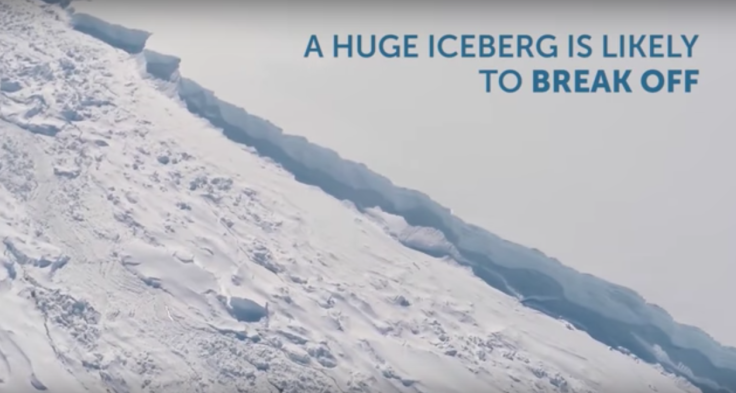The Crack In The Larson C Ice Shelf Is Growing [Video]

Not only is Antarctica is experiencing some incredibly warm temperatures, it may soon lose a large piece of an ice shelf. That could cause massive amounts of ice to fall into the ocean, adding lots of fresh water and possibly raising the sea level.
What is an ice shelf?
An ice shelf is an extension of a glacier that's on land, but the shelf is floating in the water, thus it can melt directly into the ocean. When it does, it adds fresh water to the ocean.
The Larson C ice shelf has a huge crack in it, and scientists from the British Antarctic Survey have new footage that shows just how large the crack is. When the crack reaches the edge of the ice, a huge iceberg could break off from the shelf.
The video shows the massive chasm from above, making it almost appear small. In reality the crack is 1,500 feet wide and more than 100 miles long, according to Climate Central.
Scientists are concerned that when the ice breaks off, or calves, the entire shelf may collapse. This happened to the Larson A ice shelf in 1992 and Larson B in 2005. Calving is normal and is just the word for the process of ice disconnecting from the shelf. But if the ice breaks off and leaves Larson C unstable, then huge amounts of glacial ice could be released into the ocean, contributing to sea level rise.
"We won’t be able to tell whether Larsen C is unstable until the iceberg has calved and we are able to understand the behavior of the remaining ice," said Dr. Paul Holland, and ice and ocean modeler at British Antarctic Survey, according to the BAS.
© Copyright IBTimes 2025. All rights reserved.



















